Haramachi Cultural Properties 4
32. Baba no Kagura Nanagei (7 Kagura Dances of Baba)
Type: City designated folk cultural assets
Date Designated: May 1st, 1995
Location: Haramachi, Baba
Owner: Baba Folk Performing Arts Preservation Society
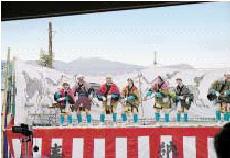
As added entertainment for the Bunka Period Lion Dances, the monks of Shugen-Kangyoin and Shugyoin in Baba learned seven kagura dances: “Banzai (Cheers),” “Tori-Sashi Odori (Bird-Catching Dance),” “Oni Odori (Demon Dance),” “Chayaken Odori (Teahouse Dance),” “Otoiko,” “Taue Odori (Rice Planting Dance),” and “Daikoku-mai (Dance of Daikokuten, the god of wealth).” It is said that after consulting with people such as the village caretaker, the village government officials, the village chief, Hyakokugashira (another type of village official), etc., they began to teach the dances to the young men in the village.
The Kagura group danced from door to door during festivals such as New Year’s and those dedicated to local deities for purposes such as exorcising demons, fire prevention, and praying for rain. They would also perform the seven kagura dances in thanks for assistance and lodgings.
In the Meiji era, a youth association took over from the village youths, and is now reorganized as the modern-day Baba Folk Performing Arts Preservation Society.
Once every four years, on the first Sunday of April, part of the seven dances will be performed at the Wadatsumi Shrine Festival.
33. Kitakaihama no Tengumai (Kitakaibama Tengu Dance)
Type: City designated folk cultural asset
Date Designated: May 1st, 1995
Location: Haramachi, Kaibama
Owner: Kitakaibama Kagura Lovers Club
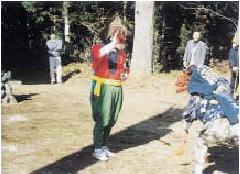
It is said that the Tengu Dance originated during the first year of Kaei (1848), when the Kaibama business opened 50 new settlements from Hokuriku. After doing so, they performed this dance.
Previously, it was organized by a group of young people, and those who wore the tengu mask are said to have been selected from among young people with a strong physique. It was suspended for about 20 years, but in 1979, the "Kitakaibama Kagura Lovers Club" was formed and is working to preserve it.
The first half of the dance is the tengu's solo dance, and the latter half is performed with a lion. It looks like a quarrel between a tengu and a lion, but it seems to have been created as a folk art-style competition between Amaterasu (sun goddess) and Susanoo-no-Mikoto (Amaterasu’s younger brother).
The dance is performed in devotion to the Inari Shrine in Kitakaibama every year during the first “horse day” in February. (Horse day refers to the twelve Earthly Branches in a Chinese ordering system. The twelve symbols are “丑・寅・卯・辰・巳・午・未・申・酉・戌・亥” and they repeat this pattern in that order. For example, the first horse day in February, 2020, was the 9th. The 10th was “未” the 11th “申” and so on. In February 2021, the first horse day will be the 3rd.)
34. Dosei Waniguchi (Copper Buddhist Gong) [Casted in 1428]
Type: City designated tangible cultural property (craft)
Date Designated: February 1st, 2000
Location: Haramachi, Enei
Owner: Individual
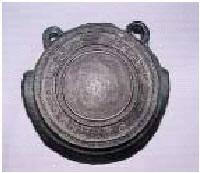
This gong was first produced in 1428 during the Muromachi period. Currently, in Fukushima, there are eight gongs designated as cultural properties, with one on the national level and seven designated by the prefecture. As for the shape of the gong, you can see that there are features such as two sets of heavy lines in the center and on the outer edges, and that the “eye” of the gong (edge of the hollowed-out hole in the side of a gong) is not protruding much. It also has characteristics of a gong from the Muromachi period such as the lack of a bump in the center of a tsukiza (the area in which the gong is struck; also known as roudouza).
The record of this gong in the Ososhi (a book written between the end of the Edo period and the beginning of the Meiji period, containing the history and geography of the Soma area) reads, “Located in the Tozai Tentenbori moat. Erected during the Shocho period. Date: March 15th. Betto Yamabushi Koyama-in Temple.” It has been in the possession of the Kodama family since ancient times.
The style of this work, where the tsukiza is flat without a protrusion in the center and the eyes of the gong have gentle edges, is a characteristic of Buddhist gongs in the Muromachi period.
35. Dosei Waniguchi (Copper Buddhist Gong) [Casted in 1696]
Type: City designated tangible cultural property (craft)
Date Designated: February 1st, 2000
Location: Haramachi, Enei
Owner: Individual
Dimensions: Face Diameter – 19cm ・ Thickness – roughly 5.2cm
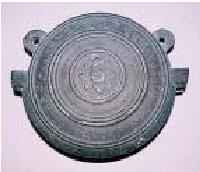
This gong is recorded in the Osochi as such: “In Senjukanon Crossroad. Betto Shugen Mt. Tanaka Daisenin Temple. Buddhist image height: 8 sun (about 24cm.) The building and history of Mt. Tanaka Daisenin Temple is unknown. Genroku Year 9 (1696).”
You can see three sets of lines engraved on this gong. Two on the outer edge, three in the center dividing each section, and then two more encircling the tsukiza. In the center of the tsukiza, you can see a design of a lotus flower with 8 petals, a common design to see on Buddhist gongs. Not much is known about the donator, Shiga Sukegoro, but they are thought to be the manufacturer based on the engraved signature and the “Made by Honchou” mark on the back.
The Osochi also has records stating the following: “Odaka Township, Uwaura Village. Metal caster a person from ancient times in the Hangai clan. Owada Kantaro.” Consequently, it is thought “Honchou” refers to Owada Kantarou Honchou, who was active during the Genroku era (1688-1704) in Uwaura, Odaka.
Owada Kantarou is the model caster of this area. He is first mentioned in literature in the “Genroku Year 10 (1624), made by Honchou” in Tennei-mura, Iwase-gun. This Buddhist gong is the oldest of the remaining Owada works.
36. Sakurai Kofungun Kamishibusa 7 Gofun (Sakurai Burial Mound Group Kamishibusa No.7 Tomb)
Type: City Designated historic site
Date Designated: February 1st, 2000
Location: Haramachi, Kamishibusa, Harahata
Owner: Minamisoma City
Dimensions: Length – 27.5 meters per side Height – 3.3 meters
It is believed that this burial mound was created in the latter half of the 4th century and that one of the leading figures who ruled the Niida River basin in the early Kofun period was buried here. A large grave was dug into the top of the burial mound, and a casket made of wooden planks was placed near the bottom of the grave. A spear and one copper mirror were excavated from the coffin. It is presumed that the spear was placed at the waist and the copper mirror near the chest or head of the ruler. It isn’t known what their relationship to the person buried in the Sakurai Burial Mounds was, but it is assumed that they had a very close relationship, such as one of a parent and child.
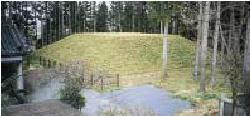
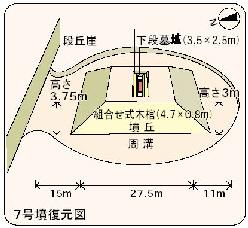
37. Kamishibusa 7-Gou Fun Shutodo Doukyo (Kamishibusa No. 7 Burial Mound Excavated Copper Mirror)
Type: City Designated tangible cultural property (archaeological item)
Date Designated: September 1st, 2001
Location: Minamisoma Museum – Haramachi, Gorai, Deguchi 194
Google Maps: Minamisoma Museum
Owner: Minamisoma City
Dimensions: Diameter – 8.7cm
This is the mirror excavated from the Kamishibusa Burial Mound No. 7, that was placed with the buried ruler in artifact number 36. Mirrors from the Kofun period were considered a symbol of the authority of powerful people, and various kinds of mirrors were made. On the back you can see a string running across the center, and around it 6 heavy lines in the shape of a circle. Between the 2nd and 3rd lines and the 3rd and 4th lines, you can see a pattern of bumps called shumon. As such, it is also known as a Shumon Mirror. The mirror was wrapped in cloth and put in a wooden box which was placed somewhere on the deceased ruler’s chest or near his head. Judging from the age of the excavated mirror, it is estimated to be made in the late 4th century (early Kofun period).
You can see this mirror on display at the Minamisoma Museum.
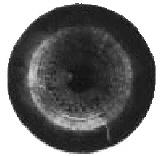
X-ray
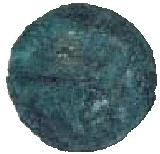
Mirror wrapped in cloth
38. Nomadote (Wild Horse Embankments)
Type: City Designated Historic Site
Date Designated: November 5th, 2002
Location: Haramachi, Kamishibusa, Harahata
Owner: Minamisoma City
Dimensions: 2403 square meters
These embankments were built during the 6th year of Kanbun (1666) by the 3rd lord of the Nakamura castle, Soma Tadatane, in order to both prevent the damage and loss of agricultural crops and to protect his horses.
The wild horse embankments cover an area approximately 8 kilometers east to west from Ishizumi, Baba, to Sukakeba, Kaibama, and approximately 2 kilometers north to south from Hayamagatake to Yotsuba-dori., with a moat built along the inside measuring at 2 meters tall and 5.4 meters wide.
Wild horse embankments were also built at the eastern foot of the Abukuma mountains in order to manage the horses grazing there, extending from the east of the Takanokura Dam through the area east of the Yokogawa Dam and into Odaka.
In the early modern period, Soma Nomaoi was a Shinto ritual where wild horses were released into a field surrounded by the wild horse embankments, captured, and dedicated to the Myoken shrine in Odaka.
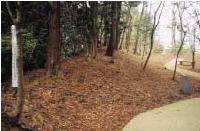
Nomadote in Sakurai Kofun Park
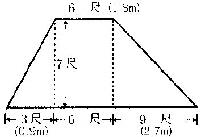
Nomadote scale
39. Takahira no Itaishi Touba Gun (Takahira Stone Monument Group)
Type: City designated archeological item
Date Designated: November 5th, 2002
Location: Haramachi, Kamitakahira, Sawada (plus other locations)
Owner: Hakusan Shrine (plus others)
There is a total of seven stone monuments: one at Hakusan Shrine in Sawada, Kamitakahira, one inside a cemetery in Dogo, Shimotakahira, and a row of five on the southwest side of Hikawa Shrine in Kawara, Shimotakahira.
Two stones in the Kawara area have engraved inscriptions, one reading the 1st year of Kagen (1304) and one in the 2nd year of Oan (1369). The one in the Dogo area is engraved with the inscription reading the 2nd year of Kagen (1304). Each of the seven stone monuments were made using stones in the area. They all have the common style of carving called yagenbori, a method in which the carved characters have a v-shaped indent rather than a rounded or flat one. It is thought that they were made and erected from the end of the Kamakura period (1185-1333) into the Nanboku-cho period (1336-1392) by members of the propertied class of society such as local samurai and monks for purposes such as Buddhist memorial services.
13 stone monuments have been confirmed to exist in the Middle Ages in the Soma-clan-occupied lands of Uda and Namekata. However, only those listed above were grouped together.

40. Niwatashi Daigongen no Itaishi Touba (Niwatashi Daigongen Stone Monument)
Type: City designated archeological item
Date Designated: November 5th, 2002
Location: Haramachi, Kitanagano, Sankyomae
Owner: Senryuji

Engraved with the inscription of the 3rd year of Tokuji (1308), it is thought that this monument was built by propertied members of society such as local samurai and monks in order to hold memorial services for deceased parents and priests, as well as to pray for peace in the afterlife for those who had passed. It is considered a valuable resource for understanding villages and religious activities in the district during the Middle Ages.
This is one of the 13 stone monuments confirmed to since the Middle Ages in Uda and Namekata, two areas ruled over by the Soma clan.
41. Soma Ota Jinja no Itaishi Touba (Soma Ota Shrine Stone Monument)
Type: City designated archeological item
Date Designated: November 5th, 2002
Location: Haramachi, Nakaota, Tatekoshi
Owner: Soma Ota Shrine

From the shape and the stone used, it is thought that this monument was built by propertied members of society such as local samurai and monks from the end of the Kamakura period (1185-1333) into the Nanboku-cho period (1336-1392), in order to hold memorial services for deceased parents and priests, as well as to pray for peace in the afterlife for those who had passed.
This is one of the 13 stone monuments confirmed to since the Middle Ages in Uda and Namekata, two areas ruled over by the Soma clan. It is considered a valuable resource for understanding villages and religious activities in the district during the Middle Ages.
42. Shagougaku 「Daimyojin」(Shrine Name Post “Daimyojin”)
Type: City designated historical item
Date Designated: November 5th, 2002
Location: Minamisoma Museum – Haramachi, Gorai, Deguchi 194
Google Maps: Minamisoma Museum
Owner: Soma Ota Shrine
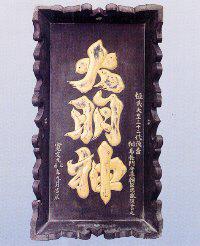
This is a framed work of calligraphy written by Soma Tadatane, an early-modern period daimyo of the Soma clan. He painted and dedicated it himself in 1669 (Kanbun period, 9th month of the 9th year) when he was the 3rd lord of the Oshu Nakamura castle.
In an explanation of Nakaota Village written in the history book Ososhi, it is recorded as “a framed work of the word 大明神 (daimyojin, a title historically applied to Japanese Shinto deities and their shrines) now located at Myoken Shrine (current-day Soma Odaka Shrine) in Bessho, Haramachi.” This was recorded in the 9th month of the 9th year of the Kanbun period, which matches the framed work itself.
Since there are few materials that directly relate to Soma clan lords of Nakamura Castle, it is a valuable piece that shows the development and faith of Soma Tadatane.
43. Hinawajuu Mei Nakamurajuu Kamio Kyuemon Tachibana Masamune
(“Nakamura-Kyuemon Kamio [Tachibana Masamune]” Engraved Matchlock Gun)
Type: City designated tangible cultural property (historical item)
Date Designated: March 31st, 2005
Location: Haramachi, Oshigama, Maeta
Owner: Individual
Dimensions: Total Length – 98.0cm Barrel Length – 69.9cm

This gun is produced by the craftsman of Nakamura castle, Kyuemon Kamio (Tachibana Masamune). It is a “Seki-ryu” (one of the schools of gunnery) matchlock gun of the Oshu Nakamura clan.
This weapon is both rare and valuable, as there are few existing weapons and armor of the Nakamura domain. It also exists as evidence that the Nakamura domain introduced gunnery of Seki-ryu (Seki School) and that Seki-ryu weaponry was produced by castle craftsman. That makes the gun a valuable resource for understanding the history of Nakamura's gunnery and the social history behind castle weaponry and weapons craftsmanship.
This gun has characteristic features typical of Seki-ryu-style specifications such as copper belts that hold the barrel and stock in place, a large trigger guard, a left-handed brass trigger that was filed down, a brass battledore-shaped lockplate, an iron hammer arm, and a muzzle without an exterior band.
Seki-ryu Gunnery – The founder of this school of gunnery was Seki Yukinobu (Seki Hachizaemon) (1596-1716) who served the Kururi Tsuchiya Clan. It was introduced into the Soma area by Soma Tadatane, the third feudal lord of the Nakamura domain, who was taught by Seki Yukinobu.
44. Kurourushinuri Hatomune Gomaidogusoku Tsuketarisaihai, Gusokubitsu, Hitsuooi
(Black-Lacquer Pigeon-Breasted 5-Piece Cuirass Full-Body Armor, Baton, Full-Body Armor Box, and Box Cover)
Type: City designated tangible cultural property (craft)
Date Designated: March 31st, 2005
Location: Minamisoma Museum – Haramachi, Gorai, Deguchi 194
Google Maps: Minamisoma Museum
Owner: Minamisoma City

A complete armor set like this one is very rare to see. With its top-quality lacquer coating, metal fittings, and decoration techniques, this is a highly valuable piece of handiwork.
From the Kenwachigai Emblem (also known as Ooka Shippou) and Mizugaki Emblem, it is thought that this was armor for the Ooka clan, which was closely related to the Soma Nakamura clan. As such, this set of armor is not only valuable in itself; it also has a lot of historical value, too.
This set consists of a helmet, cuirass, shoulder guards, face mask, bracers, thigh guards, shin guards, armored foot coverings, as well as a baton, an armor box to put everything in, and a leather armor box cover.
One particular feature of the helmet is a device that could spin the top half of the helmet. This type of helmet is known as a mawari kabuto, or “spinning helmet,” and is quite rare.
- この記事に関するお問い合わせ先
- このページに関するアンケート
-
より良いウェブサイトにするために、このページのご感想をお聞かせください。













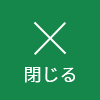
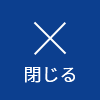
更新日:2021年05月19日